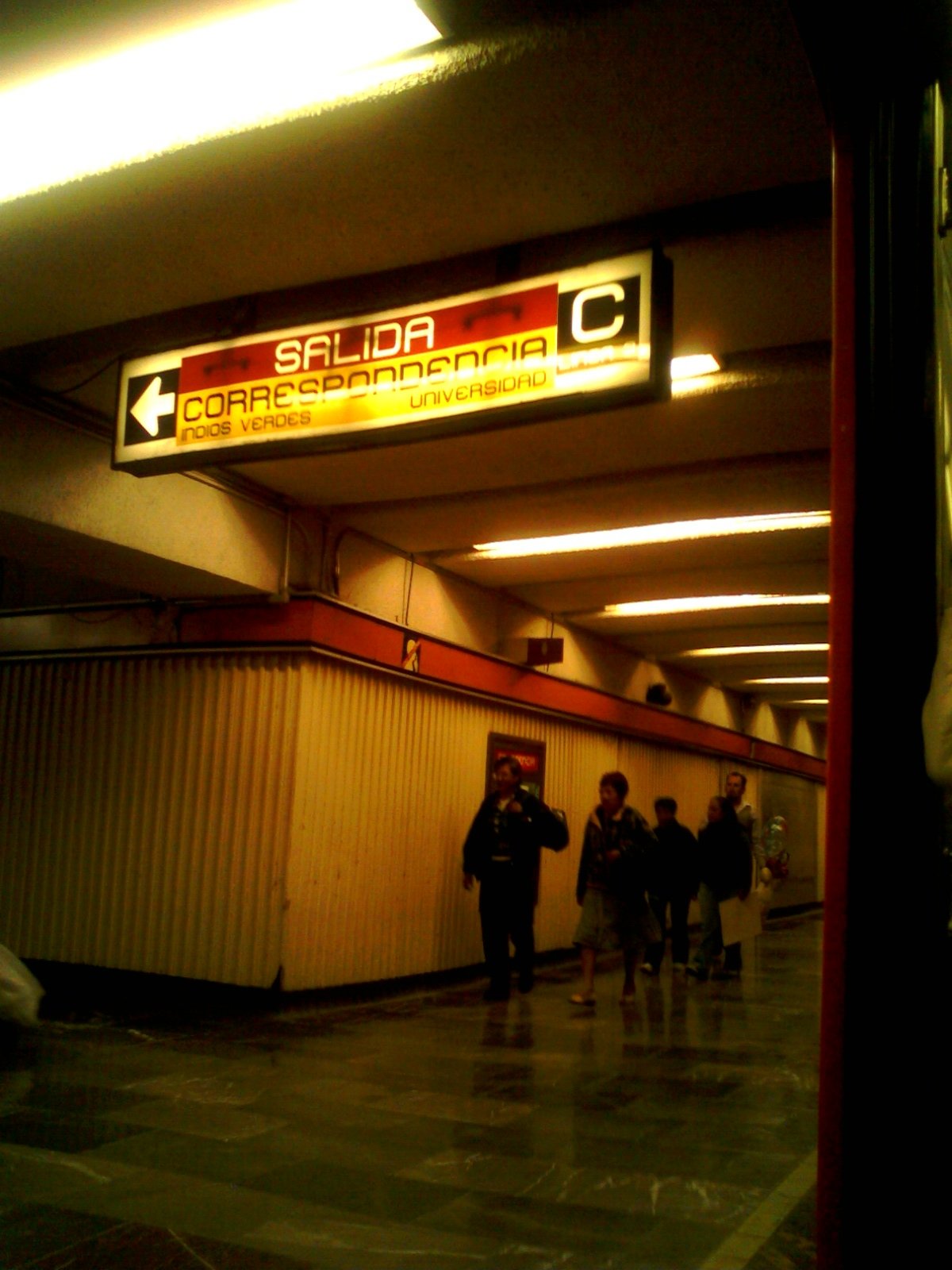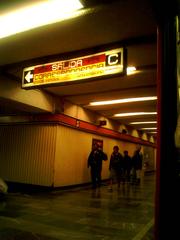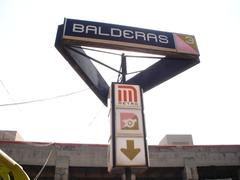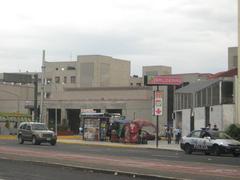
Balderas Mexico City: Visiting Hours, Tickets & Historical Sites Guide
Date: 14/06/2025
Introduction to Balderas Mexico City and Its Historical Significance
Nestled in the heart of Mexico City’s Centro Histórico, Balderas is a vibrant crossroad of history, culture, and urban life. Centered around the iconic Balderas Metro Station, the neighborhood offers a unique opportunity to immerse yourself in Mexico’s layered heritage—from its Aztec origins through colonial transformations and pivotal moments in the Mexican Revolution. Named after Colonel Lucas Balderas, a national hero, the area seamlessly blends historical landmarks with bustling artisan markets and cultural hubs such as the Biblioteca de México and Mercado de Artesanías La Ciudadela. Whether exploring neoclassical architecture, shopping for authentic crafts, or utilizing one of the city’s busiest metro transfer points, Balderas is a gateway to the multifaceted identity of Mexico City.
This comprehensive guide provides essential information for visiting Balderas: detailed hours, ticketing, accessibility, safety, nearby attractions, and tips for guided tours and local events. It also highlights Balderas’s role in music, art, urban development, and its inclusion in a UNESCO World Heritage Site. Explore Balderas and its cultural treasures through official resources like the Mexico City Metro and the Centro Histórico timeline.
Contents
- Introduction
- Pre-Hispanic and Colonial Origins
- Evolution of Balderas Street
- Key Landmarks & Visiting Information
- Biblioteca de México
- Metro Balderas Station
- Mercado de Artesanías La Ciudadela
- Balderas in Modern Mexican History
- Urban Development & Social Life
- Safety & Notable Incidents
- Architectural & Urban Landscape
- Balderas in Popular Culture
- UNESCO World Heritage Status
- Practical Visitor Information
- Frequently Asked Questions (FAQ)
- Visual & Interactive Resources
- Conclusion & Call to Action
Pre-Hispanic and Colonial Origins
Balderas occupies land that was once part of the Aztec capital, Tenochtitlan, founded in 1325. While not a distinct neighborhood in that era, Balderas lies within the original urban grid, near the ceremonial center (Mexico City Historical Timeline). After the Spanish conquest in 1521, the colonial grid—including Balderas Street—was laid atop the ruins of Tenochtitlan, transforming the area into a center for commerce, religion, and governance (Exploring the Historic Center).
The Evolution of Balderas Street
Calle Balderas honors Lucas Balderas, a military officer who died in the 1847 U.S. invasion. Historically, it marked the western edge of the colonial core and has evolved into a vital artery filled with shops, markets, and institutions, reflecting centuries of urban growth (Top Things to Do in Mexico City).
Key Landmarks and Visiting Information
Biblioteca de México
- Location: Calle Balderas 12-14
- Visiting Hours: Tuesday–Sunday, 10:00 AM–6:00 PM
- Tickets: Free
- Accessibility: Wheelchair accessible
Housed in the historic La Ciudadela building, once a tobacco factory, military barracks, and prison, the Biblioteca de México has served as a premier public library since 1946. It features more than 600,000 volumes and special collections.
Metro Balderas Station
- Operating Hours: Daily, 5:00 AM–midnight
- Tickets: 5 MXN per ride; purchase at booths or with rechargeable cards
- Accessibility: Elevators and ramps available
Inaugurated in 1969, the Balderas Metro Station is a major transfer hub (Lines 1 and 3). It is immortalized in Rodrigo González’s song “Metro Balderas” and features architectural details by Félix Candela.
Mercado de Artesanías La Ciudadela
- Opening Hours: Daily, 9:00 AM–7:00 PM
- Tickets: Free entry
Established in 1965, this artisan market showcases crafts from all 32 Mexican states, with textiles, ceramics, jewelry, and folk art.
Balderas in Modern Mexican History
Balderas played a key role during the Mexican Revolution, with La Ciudadela serving as a stronghold during the Decena Trágica in 1913 (Exploring the Historic Center). Later, the area became a cultural and intellectual hub, thanks to its proximity to Alameda Central and the Palacio de Bellas Artes (Historic Center Mexico City).
Urban Development and Social Life
The introduction of the metro in the late 1960s transformed Balderas into a lively social hub for students, artisans, and activists. Its public spaces regularly host cultural festivals, demonstrations, and art performances, highlighting its dynamic community (35 Things Mexico City is Famous For).
Safety and Notable Incidents
While generally safe, visitors should remain alert in crowds, particularly in the metro. The 2009 shooting at Balderas Metro Station led to heightened security and improved safety measures (Tips for Mexico City).
Architectural and Urban Landscape
Balderas features a mix of colonial-era neoclassical buildings, art deco, and modern architecture. Alameda Central, the oldest public park in the Americas (1592), is nearby, offering green space and a tranquil retreat (Historic Center Mexico City).
Balderas in Popular Culture
From Rodrigo González’s iconic song to representations in film and literature, Balderas has a prominent place in Mexican popular culture, serving as both a setting and symbol of Mexico City’s spirit (35 Things Mexico City is Famous For).
UNESCO World Heritage Status
Balderas is part of the Centro Histórico, a UNESCO World Heritage Site since 1987, which has helped preserve its architectural and cultural legacy (Exploring the Historic Center).
Practical Visitor Information
- Location: Balderas Street runs through Centro Histórico; Metro Balderas is the main access point.
- Transport: Accessible via Metro Lines 1 & 3; well-connected by buses and pedestrian routes.
- Guided Tours: Available through local operators, often covering Balderas and adjacent sites.
- Accessibility: Major landmarks, including the Biblioteca de México and Metro Station, are wheelchair accessible.
- Tickets & Hours: Most sites offer free entry; hours as listed above.
Frequently Asked Questions (FAQ)
Q: What are the visiting hours for the Biblioteca de México?
A: Tuesday to Sunday, 10:00 AM–6:00 PM; free admission.
Q: How do I reach Balderas by Metro?
A: Lines 1 and 3 serve Balderas; station open 5:00 AM–midnight.
Q: Are guided tours available?
A: Yes, many local companies offer guided walking tours that include Balderas.
Q: Is the area safe for tourists?
A: Generally yes, especially during the day. Exercise standard city precautions.
Q: Do I need tickets for Mercado de Artesanías La Ciudadela?
A: No, entry is free.
Visual and Interactive Resources
Explore virtual tours and maps of Balderas and the Centro Histórico through official tourism platforms. High-quality images of landmarks like Biblioteca de México and Mercado La Ciudadela are widely available online.
Conclusion and Call to Action
Balderas stands as a testament to Mexico City’s resilience and cultural vibrancy. Whether you are a history buff, art lover, or casual traveler, Balderas offers a memorable blend of past and present. Use this guide to plan your visit, explore its rich tapestry, and immerse yourself in the heart of Mexico City’s historic core.
For more travel tips and in-depth guides, explore our related articles, download the Audiala app for personalized tours, and follow us on social media for updates and special offers.
Discover Balderas Station: Your Gateway to Mexico City’s Rich Heritage
Historical Resonance and Urban Identity
Balderas Metro Station, named after Colonel Lucas Balderas, is marked by its distinctive cannon logo referencing the artillery preserved in the nearby Ciudadela Plaza. The station played a central role during the Ten Tragic Days (La Decena Trágica) in 1913, a pivotal event in the Mexican Revolution (Metro Balderas Official).
Architect Félix Candela designed the southwest corner of the station, linking Balderas to other iconic metro stations and blending architecture with artistic vision.
Artistic and Musical Homage
Immortalized by Rockdrigo González’s 1984 song “Metro Balderas,” the station is a cultural touchstone. A statue inside the station honors González, making the site a pilgrimage destination for fans of Mexican rock urbano.
Proximity to Cultural Landmarks
Balderas Station offers easy access to:
- La Ciudadela Artisan Market: Over 350 vendors of crafts and folk art (Ciudadela Market Wikipedia)
- Library of Mexico: A major cultural venue in a historic building (Metro Balderas Official)
- Centro de la Imagen: Renowned center for photography and visual arts
- Galería Abraham Zabludovsky: Local art gallery
Nearby neighborhoods like Ciudadela and Roma Norte are home to additional cultural centers and theaters.
Visitor Information
- Hours: 5:00 AM–midnight daily
- Tickets: 5 MXN per ride; tickets and rechargeable cards available at kiosks
- Accessibility: Ramps, elevators, and tactile paving
Special Events and Guided Tours
Check official websites or local listings for exhibitions, performances, and festivals. Guided tours focusing on the station’s history or nearby sites are available through local operators.
Photographic Opportunities
Highlights include Candela’s architectural details, the cannon logo, the vibrant Ciudadela Market, and public plazas—ideal for capturing the city’s street life.
Social and Community Significance
Serving tens of thousands daily, Balderas Station is a hub for social diversity and community events, with nearby public spaces like Plaza Morelia and Jardín Garibaldi fostering multicultural gatherings.
Urban Memory and Symbolism
The station’s cannon logo connects commuters to Mexico’s revolutionary past, reinforcing Balderas’s role as a living monument.
Cultural Exchange
Balderas’s centrality offers easy access to iconic sites like Alameda Central, Palacio de Bellas Artes, and the Zócalo. The Ciudadela Market, in particular, supports artisans and preserves regional crafts.
Everyday Life and Spirit
Balderas Station is alive with commuters, vendors, and performers, capturing Mexico City’s energy and creativity.
Tips for Visitors
- Explore on foot for local discoveries
- Attend events and performances at nearby centers
- Appreciate public art and murals
- Interact with guides and artisans
- Support local crafts
- Respect the space as both transit hub and historical site
FAQ
Q: What are Balderas Station’s hours?
A: 5:00 AM–midnight, daily.
Q: How do I buy metro tickets?
A: Purchase at station booths or via rechargeable cards at kiosks.
Q: Is Balderas Station accessible?
A: Yes, it features ramps, elevators, and tactile guides.
Q: What historical sites are nearby?
A: Ciudadela Market, Library of Mexico, Centro de la Imagen, and Ciudadela Plaza.
Q: Are guided tours available?
A: Yes, through local cultural centers and tour operators.
Visual Suggestions
- Photo of Balderas Station entrance
- Image of the cannon logo
- Picture of Ciudadela Market
- Map of Balderas and nearby landmarks
Balderas Mexico City: Visiting Hours, Tickets & Top Historical Sites
Overview
Balderas is a central neighborhood ideal for exploring Mexico City’s museums, artisan markets, parks, and architectural landmarks.
Quick Access Overview
| Attraction | Type | Distance | Visiting Hours | Tickets |
|---|---|---|---|---|
| Biblioteca de México | Library | Adjacent | Tue–Sun 10 AM–6 PM | Free |
| La Ciudadela Market | Artisan Market | 2 min | Daily 10 AM–7 PM | Free |
| Jardín Pushkin | Urban Park | 10 min | Daily 6 AM–10 PM | Free |
| Museo de Arte Popular | Museum | 10 min | Tue–Sun 10 AM–6 PM | 70 MXN (free Sun) |
| Alameda Central | Park | 12 min | Daily 5 AM–9 PM | Free |
| Palacio de Bellas Artes | Cultural Venue | 15 min | Tue–Sun 11 AM–5 PM | 70 MXN (museum) |
| Torre Latinoamericana | Tower | 15 min | Daily 9 AM–9 PM | 130 MXN |
| Mercado de San Juan | Food Market | 20 min | Mon–Sat 7 AM–6 PM | Free |
Nearby Dining and Events
Enjoy street food, local markets, and renowned churros at El Moro Churrería. Throughout the year, Balderas hosts book fairs, artisan festivals, and performances—check official calendars for details.
Getting Around and Practical Tips
- Metro: Lines 1 & 3, 5:00 AM–midnight
- Taxis/Ride-sharing: Prefer Uber/Didi over street taxis
- Walking: Safe by day; avoid deserted streets at night
- Accessibility: Major sites are generally wheelchair accessible
Safety, Money, and Communication
- Safety: Stay alert in crowds, keep valuables secure, and use reputable transport
- Money: Cash is essential for markets; cards accepted at larger venues
- Connectivity: Free Wi-Fi in public spaces; local SIM cards available with passport
Weather
June brings mild temperatures (22–26°C/72–79°F) and afternoon showers. Pack layers, rain gear, and comfortable shoes.
Cultural Etiquette
Dress neatly, greet politely, and ask permission before photographing people. Modest attire is expected in religious spaces.
Family and Accessibility
Families will find parks and museums, though accessibility varies—confirm details in advance.
Essential Contacts
- Tourist Police: White uniforms, present in tourist zones
- Tourist Info Centers: At main plazas and metro stations
- Official Website: CDMX Tourism
Final FAQ
Q: What are Balderas Metro Station hours?
A: 5:00 AM–midnight daily.
Q: Is there an entrance fee for Balderas?
A: No, but some attractions are ticketed.
Q: Are guided tours available?
A: Yes, through local agencies and TourHQ.
Q: Is Balderas safe?
A: Yes, with standard precautions.
Conclusion
Balderas captures the essence of Mexico City—blending ancient roots, revolutionary history, vibrant culture, and daily urban life. With its central location, accessible transit, and wealth of attractions, Balderas is an essential stop for any visitor. Use this guide and the resources below to plan your journey and immerse yourself in one of Mexico City’s most dynamic neighborhoods.
Ready to explore?
Download the Audiala app for personalized travel tips, follow us for updates, and browse our other guides to make the most of your time in Mexico City!
Sources
- Mexico City Metro Balderas
- Historical Timeline of Mexico City
- Exploring the Historic Center of Mexico City
- Ciudadela Market Wikipedia
- Rough Guides Mexico City
- Mexico City Metro Official Site
- Mexico City Tourism
- The Broke Backpacker
- Mexico Travel Secrets
- Condé Nast Traveler
- Wanderlog: Top Things to Do in Mexico City













































































































































































